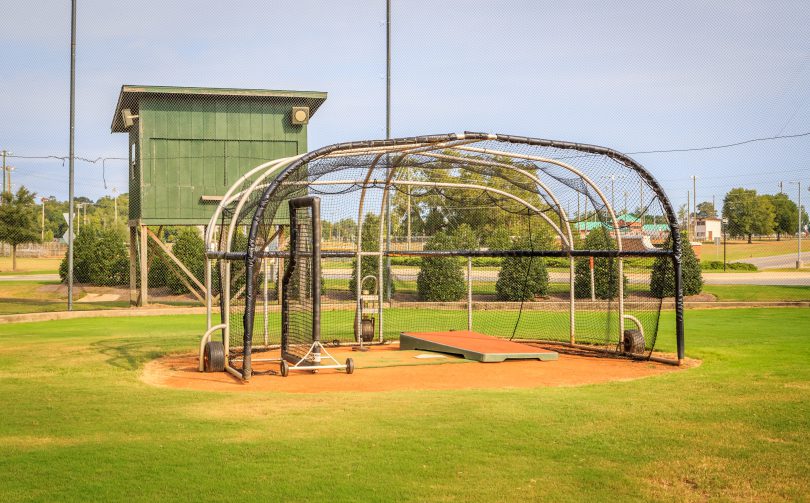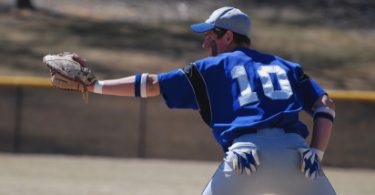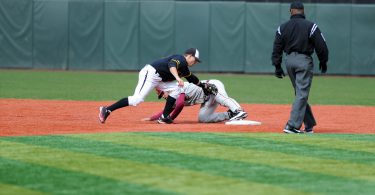By Eric del Prado
During the season, the goal of every hitter should be to have in-game success that helps the team win. However, we all know it is not always smooth sailing. Players will experience slumps and need to make in-season adjustments in order to maximize their success. These adjustments come in many forms, including: approach, timing, or mechanical adjustments. Making adjustments during the season can be scary because many times players will struggle as they get used to whatever adjustments they are making; however, adjustments need to be made.
In order to know when to make adjustments, coaches and players have to know when players are struggling (not just having a stretch of bad luck). This means evaluating hitters’ at bats using an objective lens. Some questions that I ask when evaluating hitters during the season are:
- Is the hitter swinging at good pitches and hitting the ball hard consistently?
- Is the hitter consistently on-time with the pitches he is swinging at? (I define on-time as being able to swing and hit the baseball on the barrel of the bat, resulting in a ball to the outfield.)
If the answers to both of these questions are yes, there are probably not many adjustments that need to be made with the hitter. However, if an answer to one of these questions is no, then I take a deeper dive into why the hitter is swinging at bad pitches or not hitting the ball well.
Many times, a hitter’s problems stems from the pitches he is swinging at. If a hitter is consistently swinging at pitches outside of the strike zone, he is not going to have much success. One cause for this could be bad timing. If a hitter is consistently not on-time to hit, he will swing at pitches outside of the strike zone because his body will not be in the proper position at the right time. Now that we have established problems hitters will encounter during the season, we will run through ways you can fix them.
There are many ways to go about helping hitters with these problems. We’ll break them down by category below.
Timing
Timing is an important aspect of hitting that will cause hitters a ton of problems. Not being on time usually leads to poor pitch selection and mechanical breakdowns. The easiest way to fix timing is to set guidelines for when a hitter should start his load. If you were to ask your high school hitters when they should load, you may get a myriad of different answers. However, when you watch big league hitters, you will see that they all start their load around the time the pitcher’s hands break to throw the ball. If a hitter is able to consistently load on time, he will have success. Another drill we like to do to challenge a hitter’s timing is the “3 Plate Drill.” Take your normal batting practice set up and put one home plate a couple feet in front of the normal one, and then take another home plate and place it a couple feet in front of that one. Have the hitter take a couple swings (off of your batting practice pitcher) from each of the different plates. Explain that the time they have to swing will change from each plate, so they will need to adjust when they start their load. The closer they stand to the pitcher, the sooner everything needs to start. This drill will give them immediate feedback on their timing mechanism and should give them an idea of when they need to start for different velocities.
Pitch Selection
There are many ways to help a hitter swing at the right pitches. In front toss or batting practice, you can have them split the plate into two parts. The inside half of home plate and the outside plate. Before the round, have the hitter designate a half of the plate (i.e. Outer Half, Inside Half) and tell them to only swing at pitches that are in that half. When they swing at pitches outside of their half, stop the round and ask them where they thought the pitch was. Another drill I like to do is to tell hitters that fastball and curve balls are coming in at random, and that they have to take the curveball. Now, the point of this drill is not to teach them to take every curveball they see in the game, but rather to help them recognize a curveball, so they can make adjustments to hit them in game situations. It is also very important to emphasize during these drills and during games that the only decision the hitter makes is NOT to swing. Meaning, everytime a hitter steps into the box he needs to think he is going to swing. If hitters are tentative and thinking about whether they should swing or not, they will not be ready to hit good pitches.
Mechanical Adjustments
Pitch selection and timing issues can be fixed without any mechanical changes. Now, we will look at how to make mechanical adjustments in-season. As stated earlier, it can be tricky to make mechanical adjustments in-season as it often takes time for hitters to feel comfortable with the adjustments they’ve made and for those adjustments to translate into in-game success.
One problem many hitters face throughout the season is that their bats do not stay in the hitting zone for a long time, making it hard for them to make consistent quality contact. The best hitters keep their bat in the hitting zone for a long period of time in order to give themselves the largest area to make quality contact. Some drills that I have found helpful for keeping the bat in the zone are top-hand and bottom-hand swings. Ideally, each hitter should be given a bat that is close in length to his game-bat but lighter, since he will only be swinging it with one hand. Using a tee or front toss, have the hitter grab the bat with only his top hand (e.g., right hand if a right-handed hitter) and have him try and hit a soft line-drive over where the pitcher’s head would be in a game. If he is able to do this, his bat is probably staying in the zone. If he is having trouble getting the feel for a one-hand swing, have him imagine he is skipping a rock, as that motion is similar to the motion the top arm should have in the swing. Once hitters have a handle for their top hands, tell them to put their bats in their bottom hand. Again, they should aim to hit a soft line drive above the pitcher’s head, trying to avoid flaring the ball to the opposite of the field. If players are having trouble doing this, tell them to pull their elbows across their bodies, while trying to keep their shoulders still.
These are two simple drills that can be done to try and create a better bat path for a hitter. The beauty of them is that the hitter should know after each swing if they executed them properly because of the immediate feedback they receive.
Concluding Thoughts
There are many reasons why hitters will struggle at various points throughout the season, and your goal as a coach should be to help minimize these struggles. While your inclination may be to try to make small mechanical tweaks here and there, I would suggest thinking first about pitch selection and timing, and using mechanical adjustments as a last resort. This will help to simplify the adjustment process for your players and decrease the time they spend struggling during the season.







